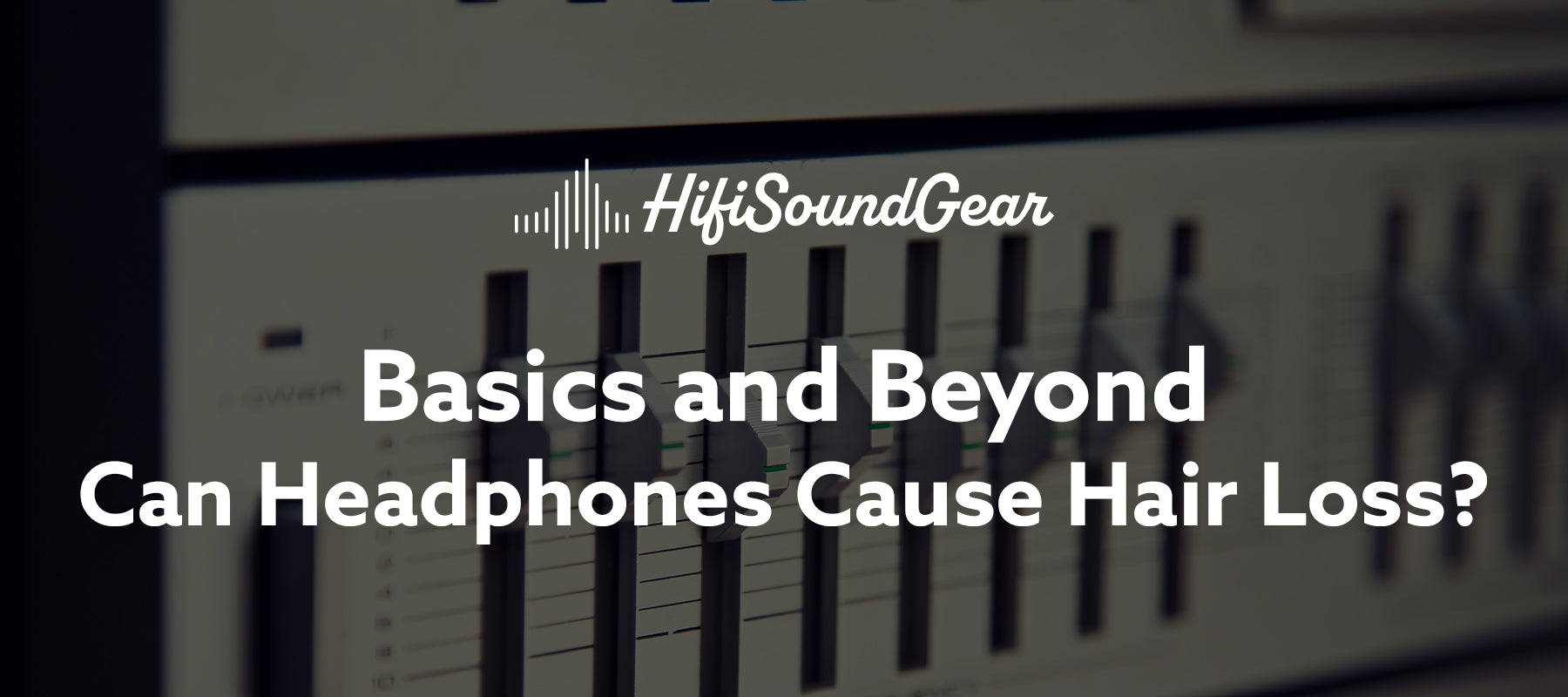
Can Headphones Cause Hair Loss?
Here's a startling statistic that might make you adjust your cans: The average person spends 18.4 hours per week wearing headphones. That's practically a part-time job for your hair!
While you've been perfecting your EQ settings and building those killer playlists, your luxurious locks might have been silently protesting under the pressure. But before you trade your beloved Sony WH-1000XM4s for a boombox, let's dive into the science behind this hairy situation and see if your audio addiction is really threatening your follicular future.
Table of Contents
Understanding "Traction Alopecia" and Headphone Use

Think of your hair like a premium audio cable – it's surprisingly resilient, but subject it to constant stress, and you might start seeing some unwanted interference.
Traction alopecia, the scientific term for hair loss caused by prolonged pulling or pressure, is the main villain in our headphone hair saga. When you wear headphones, they create constant pressure on your scalp, similar to how a compressed audio signal might lose its dynamic range. This pressure can gradually weaken hair follicles, especially along the headband area where your premium cans rest.
Research from the Journal of Dermatology suggests that consistent pressure exceeding 4 hours daily can contribute to noticeable hair thinning – that's about the length of your average podcast binge!
Different Headphone Designs and Their Hair Impact

Not all headphones are created equal when it comes to their follicular impact. Let's break down the usual suspects:
Over-ear headphones distribute pressure more evenly, like a well-balanced soundstage. While they're generally gentler on your hair, their larger size means more overall contact area. Think of them as the gentle giants of the audio world – powerful but potentially problematic with prolonged use.
On-ear headphones concentrate pressure in smaller areas, like an over-compressed audio track hitting the red. These can be more problematic as they create focused pressure points on your scalp. The tighter the clamp force (measured in grams-force), the higher the risk of hair damage.
The material matters too – premium headphones with protein leather and memory foam adapt to your head shape, while basic plastic headbands can be as forgiving as a brick wall to your soundwaves.
Signs Your Headphones Might Be Damaging Your Hair
Just as a trained ear can detect audio clipping, you can spot early warning signs of headphone-related hair stress:
- A visible line or indentation along your hairline where the headband sits (like a poorly placed microphone leaving marks on your desk)
- Increased hair fall specifically along the headphone contact areas
- Thinning patches that match your headphone's pressure points
- Scalp tenderness or discomfort after extended listening sessions
Prevention Tips for Headphone Users

Time to optimize your setup like you would your audio chain! Here's how to protect your precious strands:
Implement the "3-2-1 Rule":
- 3 hours maximum continuous wearing time
- 2 finger-width adjustment of position every hour
- 1 hour break between long sessions
Adjust Your Headphone Fit: Position them like you would position studio monitors – finding that sweet spot between comfort and functionality. Looser is better, as long as you're not sacrificing sound quality.
Add Custom Padding: Consider it like adding acoustic treatment to your room. Additional cushioning on the headband can significantly reduce pressure while maintaining optimal sound delivery.
Alternative Solutions and Hair-Friendly Audio Options
If you're serious about protecting your locks while maintaining audio quality, consider these alternatives:
- Bone conduction headphones: They bypass your hair entirely, like a direct input to your skull
- High-quality earbuds: Modern IEMs deliver stunning sound without the pressure problems
- Lightweight headphone models: Some premium options weigh less than 250g
- Headphones with suspended headband designs: These distribute weight more evenly
Professional Advice and Treatment Options
If you're noticing concerning changes, consult a dermatologist – they're like audio engineers for your scalp! Professional treatments might include:
- Topical medications to strengthen follicles
- Scalp treatments to promote hair growth
- Adjustments to your hair care routine
- Professional advice on hairstyles that reduce tension
The Bottom Line
Just as you wouldn't run your audio into the red for hours, you shouldn't subject your hair to constant pressure. The key is moderation and mindful use. With proper technique and the right gear, you can keep your sound pristine and your hair divine.
Remember: Your hair and your headphones can coexist peacefully – it just takes a bit of tweaking, like finding the perfect balance in your mix. Keep these tips in mind, and you'll be able to enjoy your favorite tracks without sacrificing your stylish locks.
And hey, if anyone gives you grief about taking breaks during your listening sessions, just tell them you're preventing clipping – of the follicular variety!
Elevate Your Listening Experience With These Related Articles
Enjoyed this article? Feel free to check out these related topics!

